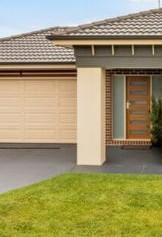
When to Get Garage Door Repairs to Avoid







If your garage door struggles to open or close properly, there could be a problem with the cables, springs, or alignment. Ignoring this can cause further strain on the motor and lead to costly repairs.
An unbalanced garage door can put excessive pressure on the motor and tracks. If you notice one side hanging lower than the other, it’s time to call for professional repairs.

If your garage door starts making grinding, squeaking, or banging sounds, it could indicate worn-out parts, loose hardware, or lack of lubrication.
2. Slow or Jerky Movement
A garage door that opens or closes unevenly or moves slower than usual might have issues with the springs, tracks, or opener.
A damaged garage door with worn-out seals or insulation can let in drafts, increasing energy costs. Sealing gaps and repairing insulation can help maintain indoor temperatures.
If your remote or automatic opener is not responding, it may be due to sensor issues, electrical problems, or a failing motor. A quick repair can restore seamless operation.
1.
Garage door springs bear the weight of the door and can weaken over time. If your door suddenly feels heavy or won’t open, the springs may need replacement.
Broken alignment or damaged tracks can make the door to get stuck. Cleaning, lubricating, or replacing worn-out rollers can fix this issue.

Frayed or broken cables can make your garage door unsafe to operate. Replacing them ensures smooth and secure movement.
Garage door sensors prevent accidents by detecting obstacles. If they’re misaligned or dirty, the door may not close properly. Regular maintenance can prevent operational failures.
Replacing worn-out seals and insulation helps improve energy efficiency and protects your garage from dust, pests, and weather damage.

• Regular maintenance – Lubricate moving parts, clean tracks, and check for loose bolts.
• Test the balance – Disconnect the opener and manually lift the door to check if it stays balanced.
• Inspect cables and springs – Look for signs of wear and call a professional if needed.
• Check the auto-reverse function – Place an object under the door and test if it reverses upon contact.



